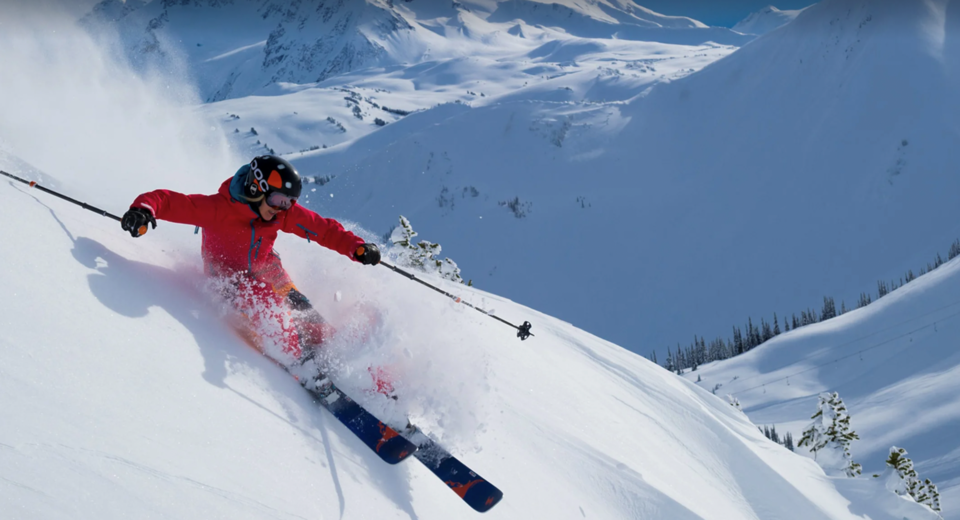By many metrics, the future of the global ski industry looks grim due to climate change, but plucky B.C. ski hills are trying to flip the script.
According to Michael Pidwirny, a climate scientist from the University of British Columbia Okanagan, projections suggest coastal mountains — including Mount Washington, Cypress Bowl, Grouse Mountain, Mount Seymour and Hemlock — will face steep declines in snowfall by mid-century. That will inevitably challenge their very existence as a winter resort, he said.
B.C.’s Interior will face even more warming than coastal regions. But with already cold winters and longer seasons, resorts like Lake Louise and Big White will remain viable well into the future, according to an unpublished study Pidwirny conducted across 12 B.C. ski hills.
As resorts face diminished snowfall, Pidwirny said operators with the deepest annual snowpacks need to start asking themselves how they will adapt.
'We will take market share’
Glacier Media contacted 34 ski resorts in B.C. to understand how operators are planning to adapt to a changing climate and the diminishing snowfall that comes with it.
At Big White outside of Kelowna, management monitors 10-year snowfall averages but is still discussing how it is going to adapt to warmer, wetter winters, according to marketing director Michael J. Ballingall.
“We know we will take market share away from those who don’t have snow. People will keep skiing wherever they can,” he said.
Buried deep in the Rocky Mountains north of Prince George, owner and manager of Powder King Mountain Resort Jim Salisbury says he hasn’t done any official modelling for the mountain. But anecdotally, he says, the resort used to average 20 metres of snow a year; now, it averages just over 12.
“We get the arctic outflows, we get the Pacific influence and you know, we're just blessed here. I mean, a bad year here at Powder King is still a good year,” he said, describing his mountain as a 200-year operation in a fortunate spot. “If we don't get snow, the whole world’s got bigger problems going on.”
SilverStar Mountain Resort’s Ian Jenkins said he is focused on reducing emissions and limiting the resort’s impact on the local environment. It is a message echoed by most of the ski resorts Glacier Media surveyed across B.C.
Nearly all the larger ski hills surveyed said they were expanding off-season activities to make up for any future drops in snowfall.
'Thinking way outside the box’
Only a few kilometres from the U.S. border, the resort at Baldy Mountain climbs out of the southern reaches of the Okanagan Valley. Baldy’s lifts reach an altitude of over 2,100 metres, making it among the highest resorts in B.C. But that hasn’t stopped its operators from moving ahead with plans to adapt to any potential drop in snowfall over the coming decades.
Troy Lucas, who helps manage the resort, told Glacier Media the mountain avoids snowmaking and the huge volume of water it uses. Instead, he says they are looking to create an elaborate system of lightweight, movable fences that — properly shaded and insulated — could capture enough snowdrifts to cover the resorts over 55 kilometres of trail.
By design, the resort’s runs sit idle two days a week. Marketed as “Powder Thursdays,” the weekly skiing sabbatical doubles as a built-in safety net for snow accumulation.
“We’re thinking way outside the box,” Lucas said.
Baldy Mountain Resort is also working to become a year-round business, opening the hill to mountain biking, camping, frisbee golf and even farming. For the first time last year, the mountain opened to summer visitors, turning on lifts and offering hikers access to a wide network of trails; and in July, “Baldy Beach” kicked off, an event bringing people together through horseshoes, games and volleyball.
Ski hill operators in more secluded parts of the province say expanding summer operations is not possible without more money or better access to tourism.
“I don’t know if we have anything in our toolkit,” said Hildur Sinclair, the second-generation owner-operator of Troll Ski Resort near Quesnel, one of the first bumps on the west side of the Caribou Mountains.
“We don’t make snow. We groom things as low as we can. We mow our hill so we don’t need as much snow… That’s about all we can do.”
Sinclair says she remembers deep freezes when her parents ran the resort. But in the last 20 years, she says winters have warmed, with the lowest temperatures shifting later in the season and impacting peak sales over Christmas.
The holiday season is a make-or-break time of year for ski hills around the world, says Scott. Most resorts do 25 per cent of their business over Christmas and New Year’s Eve. Miss that, and a mountain will have financial problems they will never catch up to for the rest of the season, said the expert on climate change and tourism.
Sinclair’s solution has been to cater to local skiers and snowboarders. That loyal customer base has helped the resort come through shocks like the COVID-19 pandemic relatively unscathed.
Now, she’s in talks with Alpine Canada to move their training from the Coast Range into more consistent climes.
“They are concerned about where they are going to train. They are looking to the Interior,” she said.



